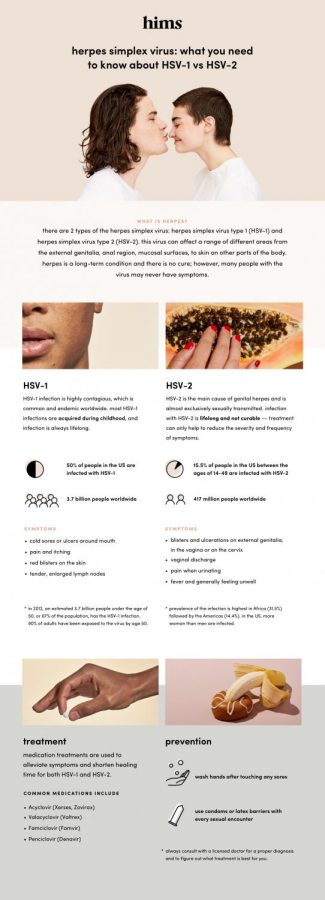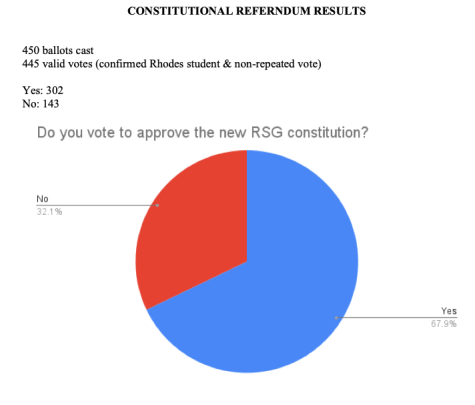Herpes simplex virus: What you need to know about HSV-1 vs HSV-2
July 31, 2019
NOTE: This story is in collaboration with forhims.com.
The 2 most common types of the herpes simplex virus are: herpes simplex virus type 1 (HSV-1) and herpes simplex virus type 2 (HSV-2). These can affect a range of different areas including the genitalia, the anal region, the inside of the mouth, and the skin. Herpes is a chronic condition for which there is no cure, but some people who carry the virus never experience symptoms.
HSV-1 is highly contagious and mostly commonly acquired during childhood. People of all genders can experience infections in oral and genital regions. Symptoms of herpes include pain and itching; tender, enlarged lymph nodes; blisters or cold sores and sometimes fever. More than 50 percent of Americans have HSV-1.
HSV-2 is the primary cause of genital herpes and is almost always sexually transmitted. Like HSV-1, it is a lifelong and incurable infection but treatment can help individuals manage symptoms. Symptoms of HSV-2 are similar to those HSV-1, with some people experiencing pain while urinating.
There are medicines available to alleviate symptoms and shorten healing time for both HSV-1 and HSV-2. Some common treatments include Acyclovir (Xerses, Zovirax), Valacyclovir (Valtrex), Famciclovir (Famvir) and Penciclovir (Denavir). Consult a doctor to figure out what treatment is best for you.
To prevent a herpes infection, always use a condom or latex barriers during any sexual encounter. Wash hands after touching any sore. Avoid sexual activity when experiencing any herpes symptoms until the outbreak is resolved.














Anita Lawson • Apr 28, 2022 at 5:46 am
It’s obvious some patients with herpes are being enslaved to the antiviral and other supplementary Orthodox medicine just to help suppress the virus and not a cure. I have been with the virus since 2015 until I was introduced by a blogger who also narrated her story online on how she was cured of Genital Herpes after using Dr Sikies Herbal Medicine. This is a year and 2 weeks since I was delivered from genital Herpes. All thanks to God for using this Great herbalist to heal me. I have promised to keep telling good things about Dr Sikies. Please feel free to share Your problems with him and don’t forget to tell him I did refer you to Him. Thanks. Write him on mail Drsikies@gmail.com He deals with Alzheimer virus, Cancer, HIV, Herpes, Genital, warts, ALS, BV, UTI, Virginal infection, Genital, Wart, HPV, Hepatitis A/B, Good luck, HSV, Pregnancy, Ex back.
here is his website: https://drsikiesherbalcure.weebly.com
you can reach me via mail: anitalawson515@gmail.com
mercy jesae • Mar 1, 2022 at 7:07 am
i am mercy jesae from California, i have been surfing from Herpes Disease for past 2years now, the experiences was really bad, i was passing through a lot of hard times.. some of my symptoms where anxiety or apathy and fatigue, dizziness, poor balance, one day i was searching through the internet for natural remedies for Herpes Disease, i saw several post about this dr called “DR MAGGI” cure for Herpes Disease, and some Diseases, so i was very convinced and ready to be cured with their natural remedies, so i contacted him and i purchased some herbal medicine for the cure, after few days of usage about two weeks i was free completely of the symptoms and went for a test and i can say now i am free from Herpes Disease totally…. indeed their remedies are super effective… contact Dr Maggi today on his email: drmaggiherbalhome@gmail.com or call or whatsApp him +1 (917) 979-6387.